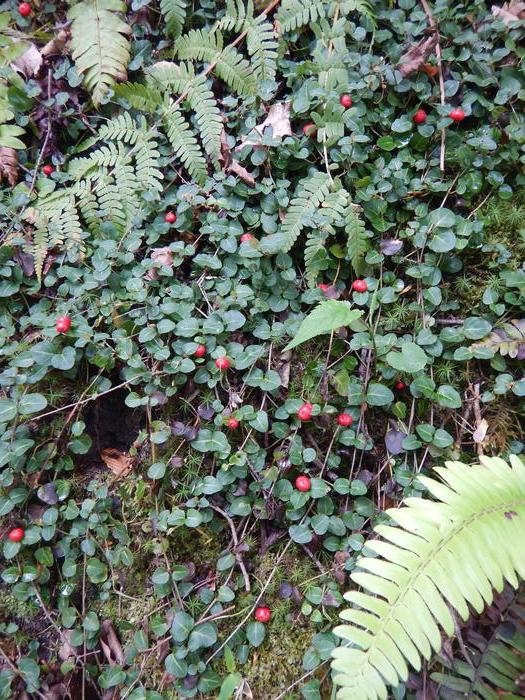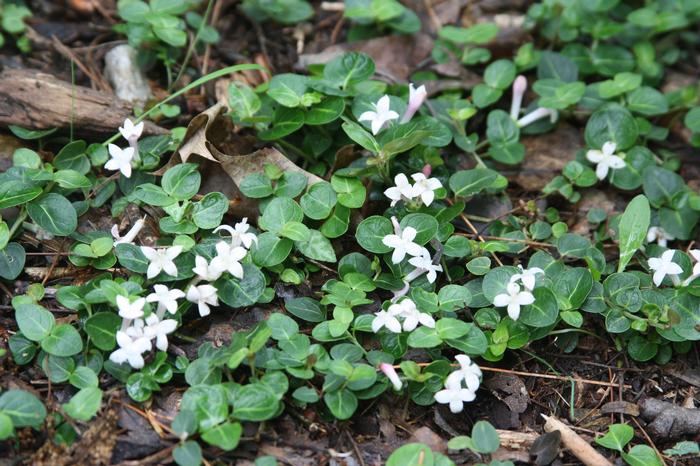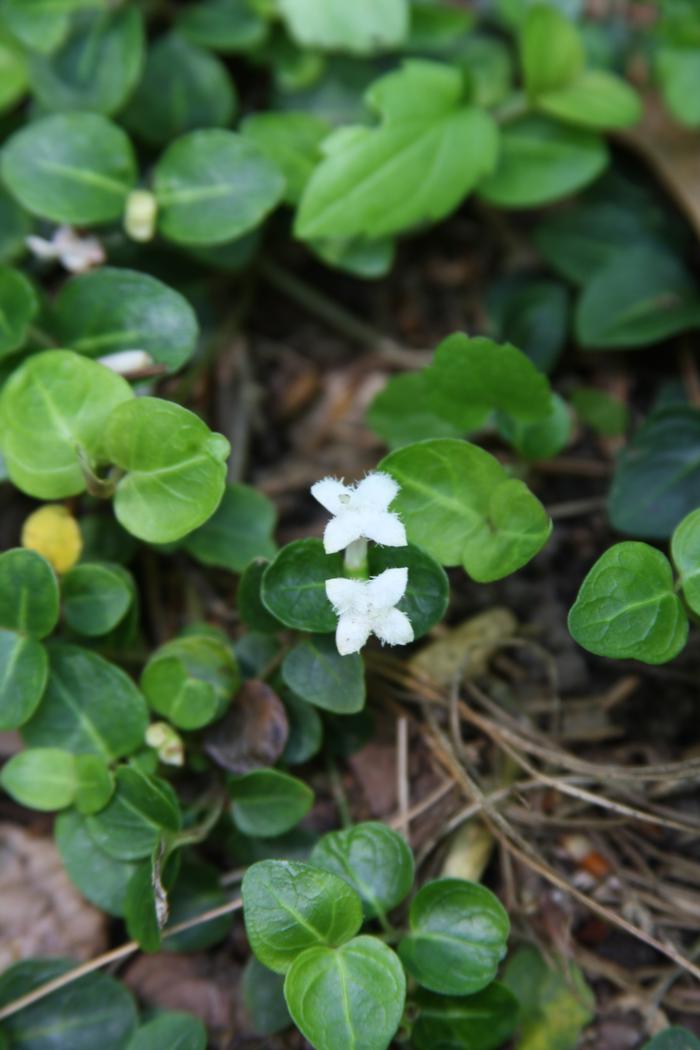General Description
Bloom Description: Flowers are small and funnel shaped with four petals. Flowers come in pairs and are white with a pink tint. Both flowers require pollination in order to produce single red berry. Flowers are fragrant. Bright red berries will last throughout winter.
Growth Habit & Shape: Creeping, slow growing plant. If conditions are ideal, it can be mat-like overtime. Does not climb.
Soil Preferences: Humus-rich, acidic soil. Sandy, sandy loam, medium loam. Dry or moist soil.
Root Description: Shallowly rooted.
Garden Uses: Woodland edge, woodland garden, natural spaces, shade garden.
Best Management & Maintenance: Clear off any leaf litter in the spring for early season interest.
Common Problems: Struggles with drought.
Benefits
Ornamental Value: Deer resistant.
Wildlife Benefits: Ruffed grouse, bobwhite quail, turkeys, white-tailed deer, skunks, white-footed mice, raccoons, and fox all eat the fruit.
Other Practical/Environmental Benefits:
Use in place of: Vinca
Ecology
Habitat:
Mitchella naturally grows on forest floors. Can be found in fir forests, hickory forests, ash forests, beech forests, and Appalachian forests.
Response to Disturbance: Can not handle disturbance. Mitchella repens takes a long time to establish and grow.
Native State Distributions:
Canada: NB, NF, NS, ON, PE, QC
USA: AL, AR, CT, DC, DE, FL, GA, IA, IL, IN, KY, LA, MA, MD, ME, MI, MN, MO, MS, NC, NH, NJ, NY, OH, OK, PA, RI, SC, TN, TX, VA, VT, WI, WV
Wetland indicator status: FACU
Companion Plants:
Canada mayflower (Maianthemum canadense), huckleberry (Gaylussacia spp.), American wintergreen (Gaultheria procumbens), eastern white pine (Pinus strobus), trillium (Trillium spp.)
References
Return to Top



